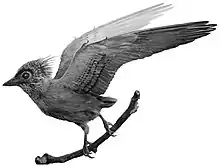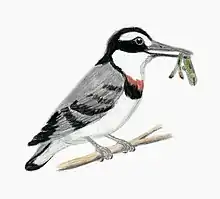| Mirusavis Temporal range: Early Cretaceous | |
|---|---|
| Scientific classification | |
| Domain: | Eukaryota |
| Kingdom: | Animalia |
| Phylum: | Chordata |
| Clade: | Dinosauria |
| Clade: | Saurischia |
| Clade: | Theropoda |
| Clade: | Avialae |
| Clade: | †Enantiornithes |
| Genus: | †Mirusavis Wang et al., 2020 |
| Species: | †M. parvus |
| Binomial name | |
| †Mirusavis parvus Wang et al., 2020 | |
Mirusavis is a genus of Enantiornithes from the early Cretaceous (Aptian - Barremian) of China recovered in the Yixian Formation. It contains a single species, Mirusavis parvus.
Etymology
The genus name Mirusavis comes from the Latin words "Mirus" (unexpected) and "avis" (bird), in reference to the unusual discovery of the holotype preserved during the laying cycle. The species name parvus means "small" in Latin.
Classification
Wang et al. (2020) recovered Mirusavis to be closest related to Shangyang graciles.
Paleobiology
The type and only specimen of Mirusavis was a partial subadult skeleton identified by the lack of ossification that would be seen in a mature individual. Medullary bone tissue was also recovered in the specimen, meaning that the fossil was a female that died during the egg-laying cycle. This find shows that Enantiornithes were unlike modern day birds in that they became reproductively active before completing the ossification of their skeleton.[1]
References
- ↑ Wang, Min; O’Connor, Jingmai K.; Bailleul, Alida M.; Li, Zhiheng (2020-06-01). "Evolution and distribution of medullary bone: evidence from a new Early Cretaceous enantiornithine bird". National Science Review. 7 (6): 1068–1078. doi:10.1093/nsr/nwz214. ISSN 2095-5138. PMC 8289052. PMID 34692126.
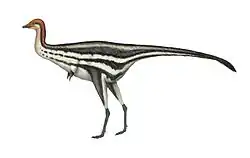
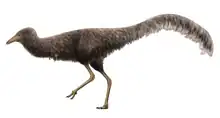



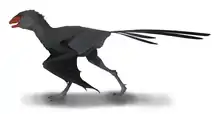
.jpg.webp)
